
I remember when I was a young girl growing up in Chicago; every summer my mother, aunts and I would drive up to the countryside of Michigan to pick peaches for canning. We would return with the trunk loaded with bushels of peaches - not to mention the 'almost bushel' that we ate during the drive back home. My mother would spend the better part of a week washing countless jars and lids. And we would both spend what seemed like days peeling, pitting, slicing and finally cooking the bushels of peaches. I can't say that I miss those days - after all that was hard work. But what I do miss is all the pies, cobblers and other goodies that my Mother made for us, all year long, as the result of a few weeks of a labor of love!
Recently a good friend of mine from culinary school, Sharon Beamon, told me about her attempt at canning peaches, and how surprisingly easy it was. Below she shares her process with us.
Canned Peaches
"Canning seems to have become an extinct practice. My mother taught it to me and her mother taught her and so on. I decided to rekindle my desire to can peaches this year. It is somewhat of a time consuming process; but if you have all the necessary tools in place, it reduces the canning time considerably." (Sharon Beamon)
Ingredients:
32 Peaches (makes 5-6 quarts)
3 cups sugar
6 cups water
¼ cup lemon juice or
Fruit Fresh
Equipment:
Jar Grabber
Water Canner
Lid lifter (I use tongs)
Jar funnel
2 large pots
1 small pot (to boil lids and rings)
Ball jars
Jar lids and rings
Slotted spoon
Table knife
Large glass bowl (Used for ice water bath)
Preparation:
Prepare the sugar syrup in one of the large pots. Stir the sugar and water together and bring the solution to a boil. Once the solution comes to a boil and the sugar has dissolved reduce the heat so the syrup can simmer.
Place lids and rings in small pot of boiling water. Reduce heat after a few minutes. Wash jars in hot soapy water and rinse. Place jars in a large pot of hot water and bring to a boil, reducing heat once water boils. (This step is not necessary but this is the way I was taught. This ensures that the jars are clean with no soapy residue remaining.)
Wash fruit thoroughly. Fill another other large pot with ¾ of water and bring to a boil. Cut a small "X" on the bottom of peaches. Carefully drop into hot water, 6 peaches at a time, for 45 seconds to 1 minute max. Scoop them out of the boiling water with a slotted spoon and place in an ice water bath. This will stop the cooking and make it easy to peel the skin off the peaches. Remove any brown spots or overly ripe areas, and then slice the peaches off the pit.
Once you have sliced the 6 peaches, add a ¼ cup of lemon juice or sprinkle with Fruit Fresh. Stir the peaches to ensure they are fully coated. This will reduce the browning of fruit and keep it a bright vibrant peach color. Repeat these steps until all peaches have been processed. Place all the peaches in the syrup on the stove for 5 minutes.
While the peaches are in the syrup solution, remove jars from hot water bath and place on a clean dry towel.
Turn the syrup solution off. Fill the jars with peaches - leaving a ½ inch head space - using your jar funnel and slotted spoon. Try to pack the peaches in the jars tightly without crushing them. When all the jars are filled with peaches, add in the syrup to each jar ensuring that the peaches are completely cover with syrup. Run a table knife between the jar and fruit tilting the jar slightly to release air bubbles that are trapped inside. Wipe the rim of the jar and carefully place the lid on top of each jar then screw on the jar ring but not too tight.
Place all jars in canner with at least 1 inch of boiling water and cover for at least 20 minutes but no more than 30 minutes. With your jar grabber lift each jar out, place on a clean dry towel, and leave over night. Check to make sure the lids are sealed by pressing in the middle of the lid. If the lid did not seal properly, it will move up and down. These unsealed jars can be stored in the refrigerator and you will still be able to eat the fruit. (Any unsealed jars of fruit cannot be stored outside of the refrigerator.) Store sealed jars in a cool dry place.
*For more detailed instruction go to: www.pickyourown.org/peachcanning.htm
 Long ago I gave up trying to stay awake until midnight on New Years Eve. What I look forward to is New Years morning – and that means waffles for breakfast! Personally, I can’t think of anything better. Throw in lots of bacon, fresh cut fruit, a pot of Earl Grey tea, and all is well with my world. What better way to usher in the New Year? Time to start a new tradition, I say.
Long ago I gave up trying to stay awake until midnight on New Years Eve. What I look forward to is New Years morning – and that means waffles for breakfast! Personally, I can’t think of anything better. Throw in lots of bacon, fresh cut fruit, a pot of Earl Grey tea, and all is well with my world. What better way to usher in the New Year? Time to start a new tradition, I say. Do not over mix. Let rest for 15 minutes. Following manufacturers recommendation, ladle the batter onto the waffle iron. Close lid and cook until brown on both sides.
Do not over mix. Let rest for 15 minutes. Following manufacturers recommendation, ladle the batter onto the waffle iron. Close lid and cook until brown on both sides.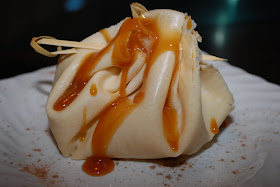


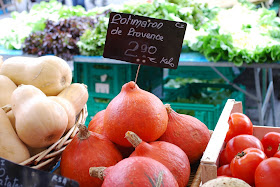



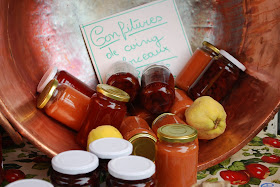



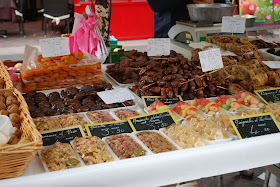

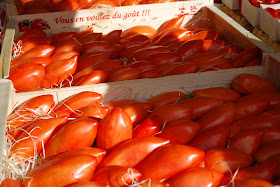



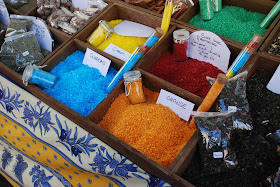

















 This is a follow-up to my last post about the homegrown, organic vegetables of Persimmon Hill Farm. I took my own advice and purchased some of their "fresh out of the ground" sweet potatoes. My original intention was to make a sweet potato pie. But I got carried away and decided to combine my three favorite desserts into one.
This is a follow-up to my last post about the homegrown, organic vegetables of Persimmon Hill Farm. I took my own advice and purchased some of their "fresh out of the ground" sweet potatoes. My original intention was to make a sweet potato pie. But I got carried away and decided to combine my three favorite desserts into one. We all know that summer time means an abundant supply of farm-fresh fruits and vegetables. But what I did not realize is that there are farms that produce year-round. I have discovered one right here in my own backyard.
We all know that summer time means an abundant supply of farm-fresh fruits and vegetables. But what I did not realize is that there are farms that produce year-round. I have discovered one right here in my own backyard. This past weekend I catered an Open House/Grand Opening for a good friend in Augusta. The fare consisted of a host of yummy hors d’oeuvres; but this one item in particular captured the attention and appetite of most guests. Although I verbally gave the recipe to everyone who asked, here it is again, in case you forgot.
This past weekend I catered an Open House/Grand Opening for a good friend in Augusta. The fare consisted of a host of yummy hors d’oeuvres; but this one item in particular captured the attention and appetite of most guests. Although I verbally gave the recipe to everyone who asked, here it is again, in case you forgot. Last week a friend came to visit. While sitting around talking about our favorite childhood foods, he mentioned cantaloupe pie. I had to admit that I had never heard of cantaloupe pie. Surely he was kidding. But I was curious, and wouldn't you know I had an overripe cantaloupe in the fridge that was destined for the trash. My friends Mothers version of cantaloupe pie was made with a graham cracker crust. Here I used ginger snaps. Okay, that was what I had on hand.
Last week a friend came to visit. While sitting around talking about our favorite childhood foods, he mentioned cantaloupe pie. I had to admit that I had never heard of cantaloupe pie. Surely he was kidding. But I was curious, and wouldn't you know I had an overripe cantaloupe in the fridge that was destined for the trash. My friends Mothers version of cantaloupe pie was made with a graham cracker crust. Here I used ginger snaps. Okay, that was what I had on hand.







